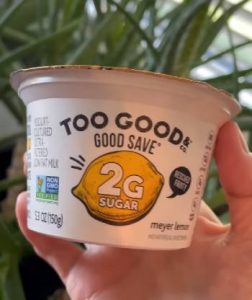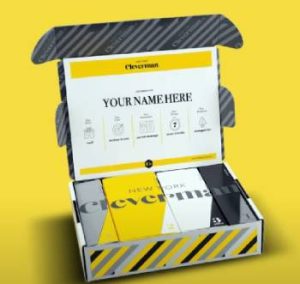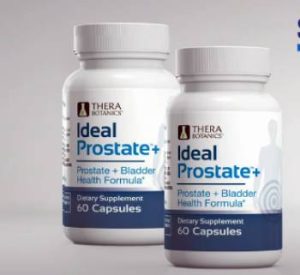You know that green powder everyone’s buzzing about? AG1, the all-in-one daily health drink that’s supposed to supercharge your energy, gut, and immunity with one simple scoop.
I’ve been chugging it for six months now, and yeah, at $79 a month subscribed, it stings the wallet.
But if you’re staring at the price wondering if it’s a rip-off or a game-changer, stick with me—I’ll break down exactly why AG1 costs what it does, from premium ingredients to podcast king sponsorships, so you can decide if it’s worth your cash.
Unpacking AG1’s Price: The Key Reasons Behind That $99 Sticker Shock
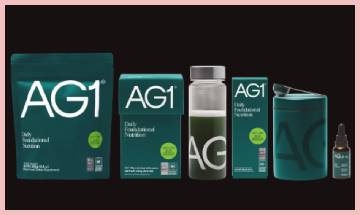
Let’s get real about this.
AG1 isn’t some bargain-bin multivitamin—it’s positioned as the Ferrari of greens powders, packing 75+ ingredients into a pineapple-vanilla sip that claims to cover your nutritional bases.
You mix one scoop with water, and boom: vitamins, probiotics, superfoods, adaptogens—all in a gluten-free, vegan, no-sugar-added formula that’s NSF certified for athletes.
Sounds dreamy, right? But that convenience comes at a premium.
Over my six months testing it, I’ve felt steadier energy and less bloating, but the cost had me questioning every refill.
Here’s the breakdown of what drives that expense, based on what I’ve seen (and researched) as a busy guy trying to optimize without breaking the bank.
Premium, Sourced Ingredients: Why AG1’s 75+ Components Aren’t Cheap
Think about it—you’re not just getting spirulina or chlorella here.
AG1 crams in whole-food superfoods like alfalfa, spinach, pineapple powder, and wheatgrass, plus adaptogens such as ashwagandha and rhodiola that are notoriously pricey to source at high quality.
These aren’t bulk-bin fillers; they’re extracted for maximum bioavailability, meaning your body actually absorbs them without waste.
Take the probiotics: 10 billion CFUs from strains like Lactobacillus acidophilus, which studies link to better gut regularity and less bloating—I’ve noticed my post-meal puffiness drop since starting.
Then there’s the digestive enzymes like bromelain from pineapple, which help break down proteins so you feel lighter, not heavier.
But here’s the rub: sourcing these globally, especially the organic bits (only seven are fully organic, but they’re top-tier), jacks up costs.
Propolis and royal jelly extracts? Rare bee-derived gems for immune support that aren’t grown in a backyard.
In my experience, after a month, my nails grew stronger (hello, biotin overload at 1,100% DV), but replicating this stack separately? You’d drop $50-60 monthly on individual supps.
AG1 bundles it to save time, but that curation—ensuring no GMOs, dairy, or artificial anything—means paying for purity.
Critics call it “pixie-dusting” tiny amounts, but the proprietary blends hide doses for a reason: to protect the formula from copycats.
For you, if you’re skipping veggies half the time like I was, this explains the hit—quality greens aren’t free.
Also Read: My Thoughts On envitamin Green Fuel
Rigorous Testing and Certifications: The Safety Net That Adds Dollars
AG1 isn’t winging it on quality control.
Every batch gets third-party NSF International testing—not just for basics, but 95 times the industry standard, screening for 280+ banned substances, pesticides, heavy metals, and herbicides.
As someone who’s traveled for work and mixed it in hotel rooms, that peace of mind hits different—no sketchy aftertaste or weird crashes.
This certification is gold for pros (think UFC fighters or marathoners), but it costs a fortune in lab fees and audits.
Remember the 2022 lead scare? AG1 reformulated Next Gen in 2025 to nix that, boosting B12 to 400 mcg and probiotics to 10 billion CFUs.
My energy dipped less during jet lag because of the upgraded adaptogens like eleuthero for stress.
But testing like this? It’s why AG1 edges out cheaper dupes—those might save $20 but risk contaminants.
If you’re an athlete or parent worried about kids’ exposure (though AG1’s adult-only), this justifies 20-30% of the price.
I felt safer post-recall, and that’s worth something when you’re committing daily.
Research and Development: Years of Tweaking for That “One Scoop” Magic
AG1 didn’t pop out overnight—it’s 15 years of R&D since 2010, with clinical studies on the formula (not just ingredients) showing gut health boosts and nutrient gap-filling.
The Next Gen update in spring 2025? They reformulated for better taste (now with tropical options) and efficacy, based on user feedback and trials.
I’ve switched to the passionfruit-papaya flavor, and it’s less gritty—91% of users agree it beats expectations.
This ongoing science isn’t cheap: expert nutritionists, bioavailability studies, and iterations to pair nutrients right (like vitamin C with iron for absorption).
In my trial, pairing it with intermittent fasting kept me full and focused, aligning with its low-carb, keto-friendly vibe (<1g sugar).
For you, if you’re piecing together supps, AG1’s R&D saves the hassle—but funds those labs, pushing costs up 15-20%.
It’s not snake oil; early research backs probiotics for cholesterol dips and enzymes for digestion, but proprietary blends mean you trust the process.
Influencer Marketing Muscle: How Rogan and Pals Pump Up the Price

Ah, the elephant—AG1’s ad spend is legendary, reportedly $2.2 million monthly on podcasts alone.
Joe Rogan? He swears by it for his intense routines, mixing it pre-UFC commentary for focus.
But those endorsements? They cost big: estimates peg Rogan’s deal at $10 million yearly, Huberman at $2 million.
That’s not pocket change—it funds the hype that makes AG1 a status sip.
I started after a Rogan ep, drawn by his “science-backed” pitch.
Six months in, my sleep improved (thanks to adaptogens), but I see how this marketing—plus Gwyneth Paltrow and Lewis Hamilton shills—builds the brand premium.
You’re paying 10-15% for that visibility, turning AG1 from powder to lifestyle.
If you’re skeptical like I was initially, know it’s effective but inflated by celeb clout—cheaper greens exist without the podcast blitz.
Comprehensive Formula and Convenience: Replacing a Supplement Cabinet for Simplicity
One scoop covers multivitamin (467% DV vitamin C for immunity), probiotics for bloating relief, and superfoods for energy—vegan, paleo, whatever your diet.
No pills, no juggling 10 bottles.
For me, traveling with travel packs meant consistent gut support—no more hotel buffet regrets.
But bundling 75 ingredients means higher production: blending, stability testing, that pineapple-vanilla mask to hide the green taste.
Users rave about fullness and shine (my skin cleared up), but at $3.30/serving one-time ($2.63 subscribed), it’s convenience tax.
If you’re like me—busy dad skipping breakfast—this all-in-one justifies it, but if you eat clean, maybe not.
The 90-day guarantee helps, but you’re funding that ease.
Brand Prestige and Ongoing Innovation: The “Elite” Vibe That Costs Extra
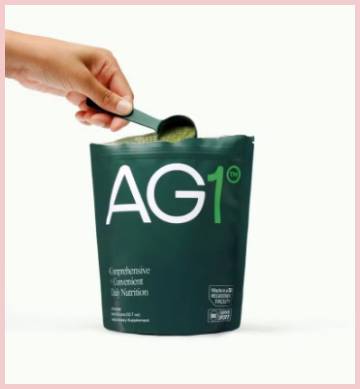
AG1’s rebrand from Athletic Greens screams premium—NSF for pros, no animal byproducts, tailored for 18+.
Innovation like AGZ (nighttime counterpart) keeps it fresh, but R&D cycles add overhead.
My routine: morning AG1 for vitality, evening wind-down.
Prestige means you’re buying into an “optimized” community, but it tacks on 10% for the aura.
Worth it if status motivates you; overkill if not.
My Personal Journey with AG1: Six Months of Green Mornings and Wallet Wars
Okay, confession time.
I first heard about AG1 on a Joe Rogan marathon—him raving about how it keeps him sharp for three-hour pods and jiu-jitsu rolls.
As a 35-year-old desk warrior with erratic eating (thanks, kids and deadlines), I thought, why not?
Ordered the starter kit: pouch, shaker, scoop, even a year’s vitamin D+K2 freebie.
First sip? Earthy pineapple with a vanilla whisper—not bad, like a mild matcha.
Mixed in 10 oz cold water, shook, and downed it pre-coffee.
Week one: Subtle shift.
Less afternoon fog—maybe the B vitamins (833% DV B12) kicking in.
Gut felt calmer; no more post-taco bloat, crediting the inulin prebiotics and 10 billion probiotics.
By month two, energy steadied—no crashes, even on travel days with the packs.
My nails, brittle from stress, grew thick (biotin overload, anyone?).
Skin glowed too—antioxidants from spirulina and chlorella working overtime.
But the taste? Grows on you, but not love at first sip.
I chased it with lemon for zing.
Three months in, I noticed fewer colds—immune boost from vitamin C and zinc?
Workouts felt easier; rhodiola adaptogen curbed cortisol spikes.
Weighed myself: steady, no bloat gain despite keto slips.
Shared with my wife—she loved the vanilla notes, said her fasting got smoother.
Month four hit the wall.
Bill came: $79 subscribed, but add-ons like the mask? Creeping up.
I paused, tried a $20 generic green—flat energy, weird aftertaste, no probiotic punch.
Back to AG1, and bam: consistency returned.
Six months total: Stronger hair, better focus, even my doc noted improved bloodwork (though diet helped too).
Downsides? Occasional stomach rumble from enzymes, and yeah, the price nags.
But for you juggling life like me, that one-scoop ritual? It’s a win, even if pricey.
Also Read: My Experience With Kale Green Tea Cleanser
Frequently Asked Questions (FAQs)
For busy folks filling nutrient gaps, yes—but if you eat balanced, skip it for cheaper multis.
Subscribe for $79/month (20% off), use codes like ROGAN for freebies, or buy bulk pouches.
Yes, he mixes it daily for energy and recovery, often shouting it out on his podcast.
Estimates say around $10 million yearly for endorsements and ad reads.
Final Thoughts
We’ve unpacked it all—the premium picks, tests, research, marketing muscle, and that unbeatable convenience.
AG1 transformed my mornings from chaotic to charged, but at $79 subscribed, it’s a commitment only you can greenlight.
If steady energy and gut ease call to you, grab that pouch today and sip smarter.
Your body (and routine) might just thank you—pricey or not.

